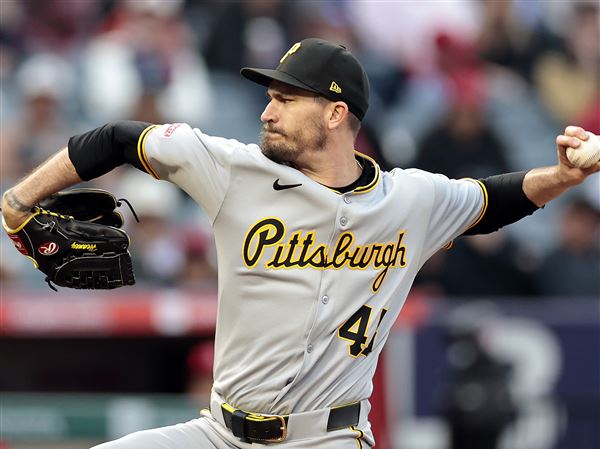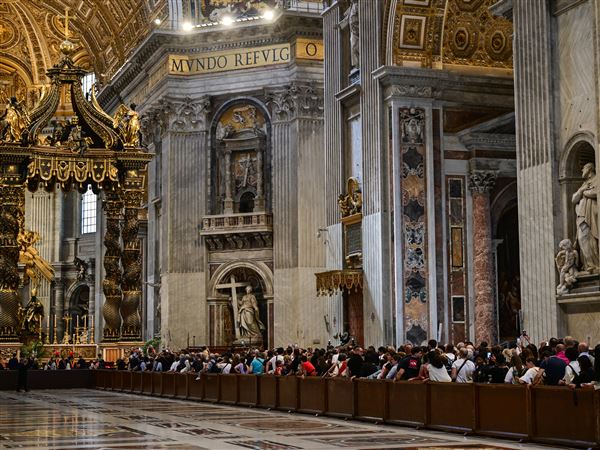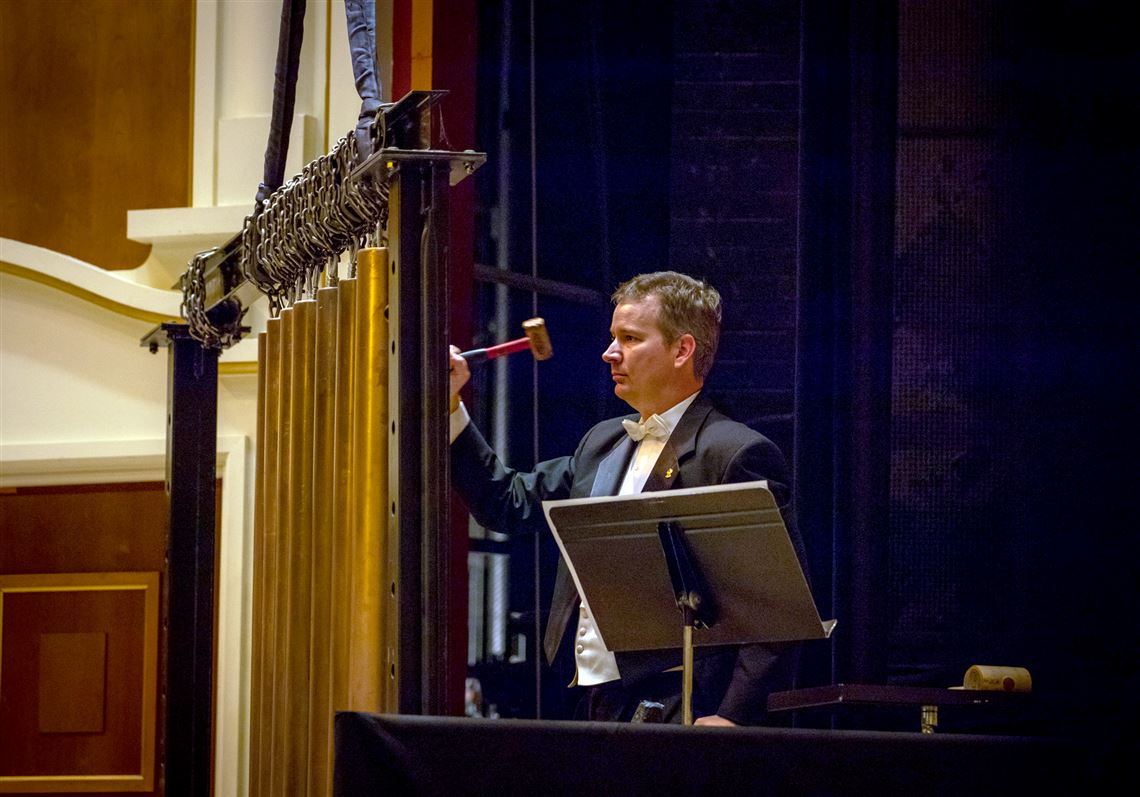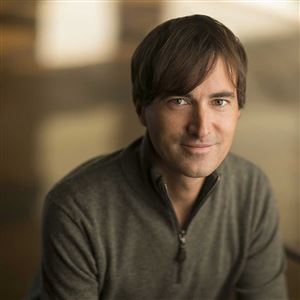The Pittsburgh Symphony Orchestra opened its subscription season Friday with a cinematic world premiere, with percussionist Jeremy Branson dancing nimbly among the Catholic bell tree to hammer the finale home.
The composer: Mason Bates, the most-performed composer of his generation (he’s 41). The premiere: “Resurrexit,” a 10-minute orchestral tone poem musically detailing Christ’s miraculous rise from the dead, dedicated to Manfred Honeck in honor of his 60th birthday. Mr. Honeck’s reputation is twined with his spirituality and Catholicism. The program also featured world-renowned violinist Pinchas Zukerman (”Pinky,” the orchestra called him) in Bruch’s first violin concerto and Brahms’ sunny Symphony No. 2.
“Resurrexit” began with dusky, shimmery tones in the upper strings, while wind instruments sighed an ornate, descending scale that had a distinct Middle Eastern flavor. Time felt suspended at first, with English horn, bassoon and trombone delivering a keening melodic lament, creating a unique timbre. Soon the dry knock of a semantron, a suspended wood plank instrument traditionally used to call monks to prayer, began amping the tempo and energy, before strings began to churn with racing scales, signaling transformation. The brass entered with a brilliant fanfare, an homage to the hymn tune “Praise the Easter Victim,” Mr. Branson bringing the piece to an animated close.
Mr. Zukerman’s relationship with the PSO has extended across five decades, though he last appeared in Pittsburgh with the symphony in 2008. The Israeli-American virtuoso basked in the opening cadenzas of Bruch’s concerto in G minor before digging into the melodies with relish. His second movement was particularly exquisite, as Mr. Zukerman tied off winding, gossamer phrases with inspired elegance. Mr. Honeck and the orchestra leapt full throttle into the finale — but here the soloist’s sound became a touch scratchier and his intonation wasn’t quite as clean in the work’s faster runs. That said, his enthusiasm and verve carried the concerto through to the finish.
Post intermission, Mr. Honeck led the orchestra in Brahms’ second symphony, a work that breathes and dances with the same freshness as it did in 1877. (It’s my personal favorite of the four Brahms symphonies.) If the orchestra maintains the same brass balances and relaxed optimism as in this performance, we’ll be in for a very strong season.
A couple of notes: Woodwind entrances were not together at times, and horn intonation was not always on the money in the Bruch concerto. Kudos to guest concertmaster Robyn Bollinger (a contender for the concertmaster position) for leading the strings with especially tight articulation in the third movement of the Brahms.
After the concert, Ms. Bollinger and Christopher Wu (violin), Andrew Wickesberg (viola), Anne Martindale Williams (cello) and Michael Rusinek (clarinet) performed the first movement of Mozart’s Clarinet Quintet. PSO musicians have been performing short post-concert programs for listeners who wish to remain a touch longer; it’s well worth sticking around.
This concert repeats Sunday at 2:30 p.m.; tickets are $20-$97.
Jeremy Reynolds: jreynolds@post-gazette.com or 412-263-1634; twitter: @Reynolds_PG. Mr. Reynolds' work at the Post-Gazette is supported by a grant from the San Francisco Conservatory of Music, Getty Foundation and Rubin Institute.
First Published: September 29, 2018, 3:31 p.m.

















